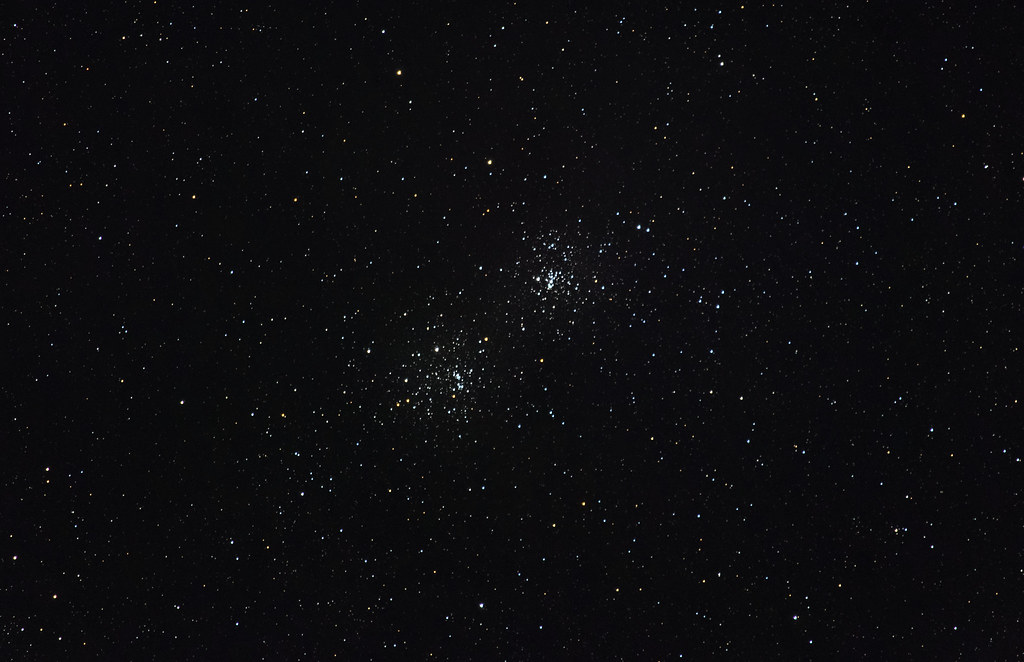Soldato
Had fun imaging and processing this one.
The Double Cluster occupies a total area of 60 arc minutes of apparent sky, which is twice the size of a full Moon. Individually, the clusters have a mass of 3,700 solar masses (NGC 869) and 2,800 solar masses (NGC 884), but as each cluster is surrounded by an extended halo of stars, the total mass of the Double Cluster is at least 20,000 solar masses. The two clusters are separated by only hundreds of light years.
Each cluster contains 300 to 400 stars and the brightest stars shine at 7th magnitude. The westernmost cluster, NGC 869, appears slightly brighter, richer and more compact than NGC 884.
At the age of 12.8 million years, the clusters are relatively young. In comparison, the Pleiades (Messier 45) has an estimated age between 75 and 150 million years. If the Double Cluster were as close to us as the Pleiades (444 light years), it would occupy a quarter of the northern sky and contain some of the brightest stars visible from Earth.
Each cluster contains more than 300 blue-white supergiants and their hottest stars on the main sequence belong to the spectral class B0. Both clusters contain a significant number of bright, young O and B-type stars.
Both clusters are blueshifted: NGC 869 is approaching us at a speed of 39 km/s, while NGC 884 is moving in Earth’s direction at 38 km/s.
 Double Cluster by Joel Spencer, on Flickr
Double Cluster by Joel Spencer, on Flickr
The Double Cluster occupies a total area of 60 arc minutes of apparent sky, which is twice the size of a full Moon. Individually, the clusters have a mass of 3,700 solar masses (NGC 869) and 2,800 solar masses (NGC 884), but as each cluster is surrounded by an extended halo of stars, the total mass of the Double Cluster is at least 20,000 solar masses. The two clusters are separated by only hundreds of light years.
Each cluster contains 300 to 400 stars and the brightest stars shine at 7th magnitude. The westernmost cluster, NGC 869, appears slightly brighter, richer and more compact than NGC 884.
At the age of 12.8 million years, the clusters are relatively young. In comparison, the Pleiades (Messier 45) has an estimated age between 75 and 150 million years. If the Double Cluster were as close to us as the Pleiades (444 light years), it would occupy a quarter of the northern sky and contain some of the brightest stars visible from Earth.
Each cluster contains more than 300 blue-white supergiants and their hottest stars on the main sequence belong to the spectral class B0. Both clusters contain a significant number of bright, young O and B-type stars.
Both clusters are blueshifted: NGC 869 is approaching us at a speed of 39 km/s, while NGC 884 is moving in Earth’s direction at 38 km/s.
 Double Cluster by Joel Spencer, on Flickr
Double Cluster by Joel Spencer, on Flickr
